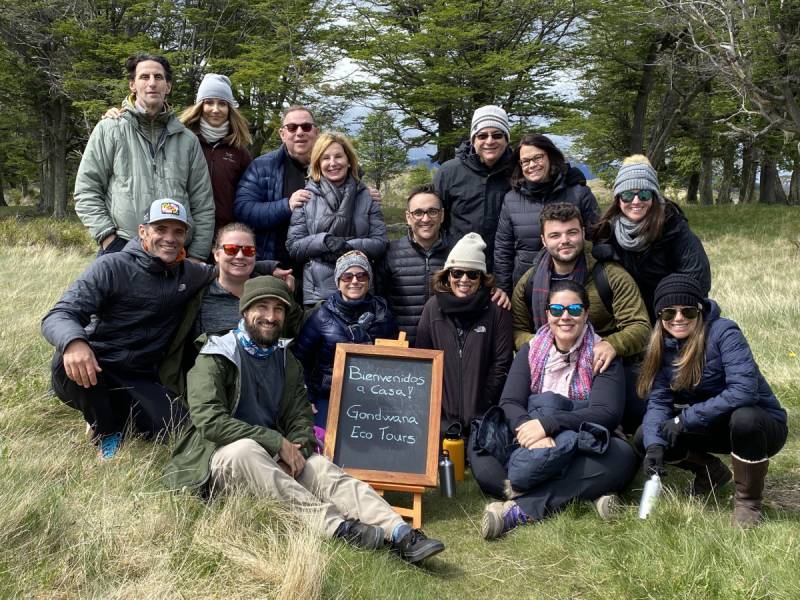Where To See Monkeys in Costa Rica
Download Travel Details >
Visiting Monkeys in Costa Rica
Costa Rica is part of the Central American region and is known for its diverse landscapes and cultures. It’s also known as an ecotourism hotspot for both outdoor adventures and wildlife sightings!
One of the most popular tourist attractions for many people is visiting monkeys in Costa Rica. Of course, where to see monkeys in Costa Rica is one of the most frequently asked questions when visitors are planning a trip to this incredible country. Booking a tour with Gondwana Ecotours takes away the guesswork and guarantees that you’ll see many different species of monkeys during your trip.
What Types of Monkeys Live in Costa Rica?
There are four main species of monkeys in Costa Rica. These include the following: The Central American squirrel monkey, the Panamanian white-faced capuchin monkey, the mantled howler, and Geoffrey’s spider monkey. All four of these monkeys can be easily spotted within the boundaries of Costa Rica’s national parks. However, the only park where you can see all four of these monkeys in Costa Rica is Corcovado National Park!
Keep reading if you want to learn more about where to see monkeys in Costa Rica.
|
Type of Monkey |
Monkey Facts |
Best Place to Find Monkeys in Costa Rica |
|
One of the smallest monkeys in Costa Rica, the Central American squirrel monkey is considered endangered. These monkeys are easily identifiable by their brown/greenish color and black cap, white face, and orange hands and feet, as well as their loud chirps, squeals, and whistles. |
Manuel Antonio National Park or in the Central Pacific region of Costa Rica. |
|
|
Also known as the Black-Handed Spider Monkey, this is the largest monkey in Costa Rica and is known for its prehensile tail that can support its entire body weight. Spider monkeys are active during the day and easily spotted by tourists! |
The protected areas around Corcovado National Park and Tortuguero National Park. |
|
|
Howler monkeys are known for their howling calls, which can be heard for miles. They tend to travel in groups of 10-20 monkeys, and tourists will often hear the monkeys before they see them. Because of their noisy nature, they are one of the easiest monkeys in Costa Rica to spot. |
The lowland rainforests of Guanacaste, Manuel Antonio, Arenal, and Monteverde. |
|
|
These intelligent primates have been spotted using tools and stealing bags of food, so watch out! Capuchin monkeys have expressive, white faces, a black body, and a prehensile tail that they use for balance. |
Widespread throughout Costa Rica, but most often found in Manuel Antonio and Corcovado National Parks. |
Do Monkeys in Costa Rica Have a Social Structure?
Now that you know where to see monkeys in Costa Rica, wouldn’t you like to know more about the monkeys themselves? The types of monkeys in Costa Rica that you will see during your visit are renowned for their complex social structures and behavior. In other words, they’re not just monkeying around – their interactions have evolved over millennia!
- Social Bonds: Monkeys in Costa Rica often live in groups, which vary in size depending on the species. These groups may consist of close-knit families or larger groups that are known as “troops.”
- Communication: All monkeys have a range of vocalizations, gestures, and facial expressions to communicate. Howler monkeys are famous for their deafening roars, while capuchins exhibit intricate grooming rituals.
- Diet: A monkey’s diet consists primarily of fruits, leaves, insects, and sometimes small vertebrates. Monkeys play a key role in seed spreading, contributing to the rainforest's ecosystem.
- Parenting: Female monkeys usually take on the responsibility of caring for and nurturing the young. Young monkeys are playful and curious, learning essential life skills through playful interactions with their siblings and peers.
The Top Four Places to See Monkeys in Costa Rica
If you want to see all four types of monkeys in Costa Rica, it’s a good idea to plan your trip around several locations. Here’s a quick chart of where to see monkeys in Costa Rica for you to reference as you start planning your adventure.
|
Location |
Types of Monkey(s) You Will See |
|
Corcovado National Park/Osa Peninsula |
Corcovado is the largest park in Costa Rica, located on the Pacific Coast, and covers roughly a third of the Osa Peninsula. The park is home to over 10 different ecosystems and 140 mammal species, including all four Costa Rican monkey species. It’s the only park in Costa Rica to see them all in one place. |
|
Tortuguero National Park |
This remote national park on Costa Rica’s Caribbean coast is filled with freshwater creeks as well as lagoons and is surrounded by dense rainforest. While many visit Tortuguero National Park for its beaches and turtles, it is rich with other wildlife too, like birds and monkeys. The best way to see monkeys in Tortuguero is by boat or canoe. The park is one of the best places in Costa Rica to see spider monkeys. |
|
Monteverde Cloud Forest |
This biological preserve covers over 24,000 acres of cloud forest and is located in the northwestern part of the country. Within the Monteverde Cloud Forest, there are 400 bird species, 180 reptilian and amphibian species, over 3,000 plant species, and 120 mammal species. Of the mammal species in Monteverde, there are two monkey species: howler monkeys and white-faced capuchin monkeys. |
| Manuel Antonio National Park |
Located on the Pacific coast of Costa Rica, Manuel Antonio is known for its incredible rainforest, white sandy beaches, and biodiversity. It’s also a great place to see monkeys in Costa Rica! There are over 100 mammal species and nearly 200 bird species found throughout the park, including three different monkey species. |
Responsible Tourism While Monkey Watching
We can make all kinds of punny jokes about monkeying around, but when you are a guest in Costa Rica, responsible tourism is the name of the game! Before you set out to see monkeys in Costa Rica, it’s important to know that under no circumstances should you ever touch, pet, or hold wild monkeys! While they are cute, monkeys are wild animals and should be left alone.
Many of Costa Rica’s monkeys are under threat, listed as vulnerable or endangered. So, the best way to experience them is from afar and without disrupting them, their behavior, or eating. This is the best way to appreciate them and ensure they remain safe and wild. And always remember, if you want a photo with a monkey, take it from a distance.
Here are a few more tips to observe all four types of monkeys in Costa Rica responsibly during your trip:
- Keep a respectful distance and never attempt to touch or feed wild monkeys.
- Refrain from making loud noises or sudden movements that could distress them.
- Dispose of trash responsibly, as litter can harm both monkeys and their environment.
- Follow the directions of your guide, who can enhance your experience while ensuring the monkeys' safety.
Visiting Costa Rica, A Primate Paradise!
Costa Rica is the perfect place to visit if you are looking for outdoor adventure, but it’s also a great place to see monkeys! Now that you know where to see monkeys in Costa Rica, you can book your primate viewing adventure with Gondwana Ecotours. Just remember that by respecting these remarkable creatures and their ecosystems, you’re playing a vital role in responsible ecotourism and guaranteeing that many more people can enjoy the same type of experience for years to come.


